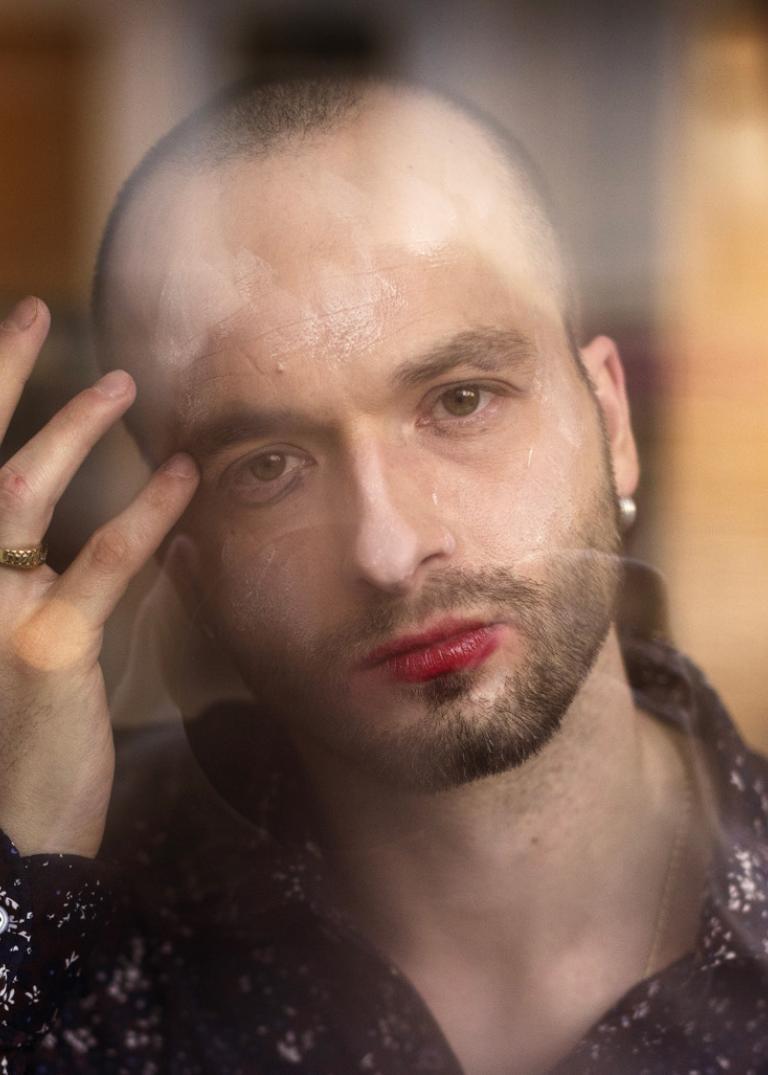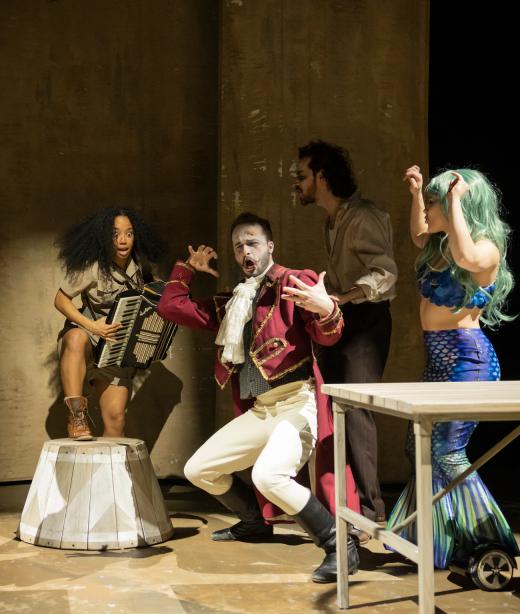
“The body is a tool for manifesting the soul”
Text: Shora Esmailian
Photo: Åsa Sjöström
Everything that could go wrong does, when the circus artists in The Dropouts perform. They’ve just lost a loved colleague – the Bird Man – and the clown paces up and down, sobbing uncontrollably. Will the circus director, played by Tomáš Červinka, be able to handle this chaos?
I see the performance twice, once when it is played to a regular audience in Lund, and once when it is played to 4th-grade pupils at Skånes Dansteater. Watching their reactions is almost as entertaining as the choreographer Jo Strømgren’s well-planned chaos. Especially when the auditorium is filled almost entirely with kids.
The eccentric circus director is played by Tomáš Červinka, and I perceive everyone on stage as half dancer and half actor in this production.
“We were directed, but it was up to us to develop our characters. The director and I agreed on the circus director’s multidimensional traits: A bit insecure, but wants to be in control, the boss. It was fun channelling those sides of myself,” says Tomáš Červinka.
Alternating between fiction and reality is something he enjoys, whether he’s on stage or off.
“That’s a fun state to be in, and it was very congenial with the character.”
It all gets out of hand when the circus director tries to work things out. He sets fire to a colleague, his knife thrower injures his assistant, the circus artists get into a fight, and the circus director shoots one of them. And yet, he won’t let anyone take over.
In The Dropouts, the audience is constantly torn between the dark and sad on one hand, and the comedy of failure on the other. The 4th-graders seemed to appreciate that.
“Kids are extreme, aren’t they! They’re feral, and much more brutal than grown-ups, who have some kind of self-control,” says Tomáš Červinka with a twinkle in his eye.
Is playing to a school class different?
“It’s a completely different experience. Kids answer and react immediately. They don’t hide, they don’t have a layer of self-consciousness and control. That’s what being a child is about, so yes, there’s a great difference between performing for them and for adults.”
The stage is action-packed all the time. What’s it like dancing in the midst of what the audience sees as chaos, but is tightly choreographed?
“It’s an organised chaos, but as a dancer I don’t perceive it as chaotic. I know exactly where to be and when. That’s what gives me the freedom to act and perform in the moment and offer the best possible presentation.
If you’re seeing The Dropouts for the first time, it might seem like a lot, but it’s not like that for the dancers. We’re focused on what we are doing, on our colleagues and on the audience. Everything and everyone has a place. Even if I help create that sense of chaos, that’s not how I experience it. And that’s very satisfying,” says Tomáš Červinka.
Why?
“I like the creative process and the effort I devote to it. Being creative is fundamental to all people. I don’t think we would be where we are today without creativity. It’s the key to reaching new heights and attaining the unknown, and it’s essential to development.”
Tomáš Červinka refers to the body as a tool for that which moves inside us.
“We exist, we have a body, and with it we do the things we need to do to survive. But not just that. Our bodies are a bridge between our inner life and that which exists in the physical world. In order to be part of our environment, we use our bodies, but they also manifest our souls.”
The performance is intense. The 4th-graders shout things out now and then, and a few can’t remain seated when it gets too exciting on stage, which Tomáš Červinka appreciates.
“When kids see the performance together with adults, they hold back a little. When it’s just kids, a group dynamic arises that is very interesting to observe, they’re all on one and the same wavelength.
For me as a dancer, it’s about reading the audience, the space, the music. I get the audience involved and know that I’m in charge, I’m the one leading them somewhere. Hopefully, I’ll succeed in getting them where I want.”
When the performance is over, the audience is told to leave. Many of them hesitate – is it really over? Should we be leaving, when the circus artists are still on stage shouting?
“We have an injured colleague, so it’s the responsible thing to do, to vacate the auditorium,” says Tomáš Červinka.
The text is taken from Skånes Dansteater Magazine 2024.
